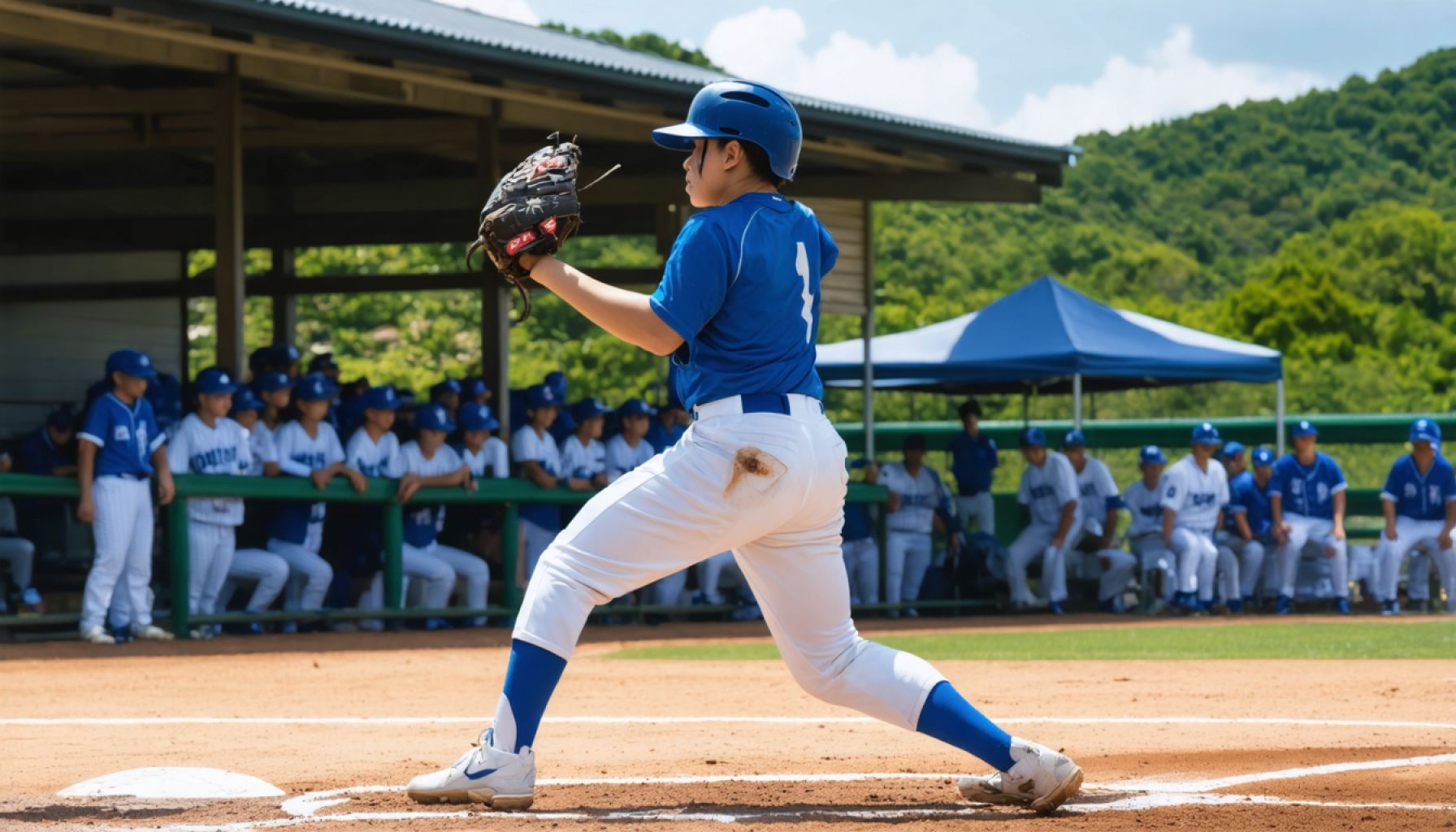- The 79th National Sports Festival in Shiga Prefecture introduces a seven-inning format for high school baseball, shifting from the traditional nine innings.
- This change is a strategic response to address scheduling challenges and weather-related disruptions in past tournaments.
- The seven-inning format aims to protect athletes’ health by reducing exhaustion from long games.
- Tiebreakers are incorporated, adding more excitement and unpredictability to the games.
- Data from this experiment could influence future changes in Japan’s iconic spring and summer Koshien tournaments.
- The Japan High School Baseball Federation seeks to balance tradition with modernity and sustainability in the sport.
Beneath the looming shadow of Mount Ibuki, an evolution is taking root in the world of high school baseball in Japan. As autumn whispers through the fields of Shiga Prefecture, the 79th National Sports Festival is poised to be a game-changer. This year, games will unfold across a new landscape—one defined by a seven-inning format, a change set to turbocharge the traditional nine innings.
Envision the crisp sound of a baseball striking a mitt as the players adjust their strategies to this new rhythm. This novel shift, birthed from the deliberations of the “Seven Inning System Review Meeting,” is more than just an experiment; it represents a decisive response to the challenges of demanding schedules and weather whims that have plagued past tournaments.
Imagine the eighth inning’s tension gleaming like the first stars of an evening sky, with tiebreakers adding unexpected twists. Picture this: a tight schedule running seamlessly over four days, no longer at the mercy of rain-soaked fields postponing championships. This adjustment not only aims to crown decisive champions but protects the health of the athletes—by preventing exhaustion, it seeks to shield these budding talents from the strains of extended games.
Data and feedback from the tournament will illuminate the path for the future of high school baseball, potentially reshaping the iconic spring and summer Koshien tournaments. With a commitment to sustainability, the Japan High School Baseball Federation’s vision crafts a bridge to the sport’s future, unveiling a blueprint where tradition intertwines with modernity like the stitches on a well-loved baseball. Here, adaptation meets tradition in a dance to preserve the sanctity of the game while propelling it into new realms.
Is the 7-Inning Format the Future of High School Baseball in Japan?
How-To Steps & Life Hacks
– Adaptation to 7-Inning Games: Coaches and players should focus on honing their skills for a shorter game. Emphasizing stronger starts is crucial given the reduced number of innings. Here are some strategies:
1. Intensive Training: Focus on endurance and speed drills to improve performance over a condensed game duration. Short sprint exercises and interval training can be particularly beneficial.
2. Game Management: Educate players on the importance of early-game runs and effective use of pitchers. The strategy might include more aggressive base-running and bunting techniques to score early.
3. Mental Conditioning: Shorter games mean less time to recover from a mistake. Mental agility exercises, such as visualization and mindfulness, can help players maintain focus and perform under pressure.
Real-World Use Cases
– Tournament Scheduling: The 7-inning format allows for more games to be played in a day, making it ideal for tightly packed tournament schedules. This adjustment is likely to inspire similar changes in other regions facing logistical challenges with sports events.
– Player Health: Shortened games reduce strain on student-athletes’ bodies, which can directly correlate with fewer injuries and a better overall sporting experience.
Market Forecasts & Industry Trends
– Global Adaptation: As seen with other sports adapting to modern challenges, high school baseball’s shift might encourage similar reforms globally. With an evolving sports environment prioritizing player health and sustainability, formats like these may set new standards.
– Technological Integration: Expect more use of data analytics in training and development. With shorter games, teams will leverage technology to extract maximum performance insights rapidly.
Reviews & Comparisons
– Comparative Analysis: The 7-inning adjustment parallels shifts in other sports underscoring the balance between tradition and modern demands for athlete health and competitive balance.
– Feedback from Pilot: Initial feedback suggests positive impacts on player health and excitement levels during the game. Future studies might delve deeper into how these changes affect player development and college recruitment.
Controversies & Limitations
– Purist Concerns: Critics argue that altering the game length deviates from baseball’s traditional structure. Ensuring these changes do not dilute the essence of the sport is crucial, and continuous feedback will be essential.
– Limited Practice: Fewer innings may mean reduced opportunities to practice in-game problem-solving, which is critical for player growth.
Features, Specs & Pricing
– Implementation Costs: The shift to 7 innings offers cost savings related to maintenance and logistics, as shorter games can mean fewer resources required for stadium upkeep and fewer operational hours.
Security & Sustainability
– Eco-Friendly Initiatives: Shorter game days contribute to reduced energy use and lower carbon footprints at event sites. Sustainable practices could be expanded, including recycling programs and solar energy utilization.
Insights & Predictions
– Expansion of Concept: As traditional sports continue to face modern challenges, similar adaptations might be implemented in other countries, potentially influencing leagues outside of Japan’s high school circuit.
Pros & Cons Overview
Pros:
– Enhanced player health and reduced fatigue
– More streamlined and efficient tournament management
– Increased game excitement with higher stakes from the start
Cons:
– Potential loss of traditional feel
– Reduced opportunity for late-game heroics and extended comebacks
Actionable Recommendations
1. Training Regimens: Implement training plans focused on quick, intense efforts and mental focus due to the game’s shorter length.
2. Engage with Feedback: Leagues and teams should continuously collect data and feedback about the new format to fine-tune it further.
3. Public Communication: Emphasize communication with stakeholders (players, coaches, fans) to foster understanding and support for the changes.
Transforming high school baseball in Japan with a 7-inning format could be revolutionary, aligning tradition with the contemporary focus on sustainability and athlete welfare. As more data becomes available, ongoing adjustments and innovations will continue shaping the sport’s future.
For more information on sports innovations in Japan, visit the official site of the Japan Sports Association.








